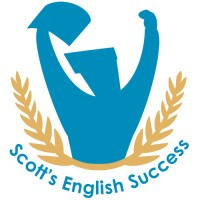Activity
Mon
Wed
Fri
Sun
Nov
Dec
Jan
Feb
Mar
Apr
May
Jun
Jul
Aug
Sep
Oct
What is this?
Less
More
Owned by Scott
Learn IELTS from Scott Jennings (BA M.Ed). IELTS expert; Master of Education; Over 25 years' experience.
Memberships
Skoolers
175.7k members • Free
22 contributions to Scott's English IELTS Academy
All or nothing words: avoid them
Avoid writing sentences like: I totally agree with... or I completely agree with... I call 'totally' and 'completely' 'all or nothing words'. Meaning there is no option for any other point of view. This is not a good way to write in academic writing tests. Instead try these words...
0
0

True, False, Not Given: Practice
In 1928, Alexander Fleming, a Scottish bacteriologist, made a groundbreaking discovery at St. Mary’s Hospital in London. While studying bacteria, he noticed a mold growing on a petri dish that had produced a substance capable of killing nearby bacteria. He named this substance penicillin, recognizing its potential as the first antibiotic. Fleming published his findings in 1929, but the medical community initially showed little interest. It was not until the 1940s that scientists Howard Florey and Ernst Chain, working at Oxford University, transformed penicillin into a practical treatment. Their efforts enabled mass production during World War II, saving countless lives by treating infections previously deemed untreatable. Penicillin’s discovery marked a turning point in medicine, paving the way for modern antibiotics. Fleming, Florey, and Chain later shared the Nobel Prize in 1945 for their contributions, cementing penicillin’s legacy as a life-saving drug. Do the following statements agree with the information given in the text? TRUE if the statement agrees with the information FALSE if the statement contradicts the information NOT GIVEN if there is no information on this 1. Alexander Fleming discovered penicillin while intentionally studying mold. 2. Penicillin was widely used as a treatment during the 1930s. 3. Howard Florey and Ernst Chain contributed to making penicillin a practical medical treatment.
0
0

True, False, Not Given: Practice
The Great Barrier Reef, off the northeastern coast of Queensland, Australia, is the world’s largest coral reef system, stretching over 2,300 kilometers and comprising more than 2,900 individual reefs. This vibrant ecosystem supports an extraordinary diversity of marine life, including over 1,500 fish species, 400 types of coral, and endangered species like sea turtles and dugongs. In 1981, it was designated a UNESCO World Heritage Site for its ecological and cultural significance, attracting millions of tourists annually. However, the reef faces severe threats from climate change, which causes coral bleaching due to rising ocean temperatures, as well as pollution and overfishing. Since the 1970s, these factors have damaged large sections of the reef. Conservation efforts, including marine protected areas and restoration projects, aim to preserve this natural wonder, but challenges persist in balancing human activity with environmental protection for future generations. Do the following statements agree with the information given in the text? TRUE if the statement agrees with the information FALSE if the statement contradicts the information NOT GIVEN if there is no information on this 1. The Great Barrier Reef is located in Western Australia. 2. The reef was recognized as a UNESCO World Heritage Site because of its biodiversity. 3. Conservation programs have completely stopped coral bleaching in the Great Barrier Reef.
0
0

True, False, Not Given: practice
Leonardo da Vinci, born in 1452 in the small town of Vinci, Italy, showed exceptional artistic talent from a young age, sketching detailed drawings that amazed his family. At 15, he became an apprentice to Andrea del Verrocchio, a leading artist in Florence, where he refined his skills in painting, sculpture, and engineering. Leonardo’s insatiable curiosity led him to explore diverse fields like anatomy, optics, and mechanics, filling notebooks with intricate sketches and innovative ideas. In 1482, he moved to Milan to serve Ludovico Sforza, the Duke of Milan, where he created iconic works like The Last Supper, a mural depicting Jesus and his disciples. His scientific observations, including studies of human anatomy and flight, were centuries ahead of his time. Despite his genius, many of Leonardo’s projects remained unfinished, reflecting his restless and inquisitive mind. His legacy endures as a symbol of Renaissance creativity and innovation. Do the following statements agree with the information given in the text? TRUE if the statement agrees with the information FALSE if the statement contradicts the information NOT GIVEN if there is no information on this 1. Leonardo da Vinci began his artistic training under Andrea del Verrocchio before he was 20 years old. 2. Leonardo’s work for the Duke of Milan included designing military weapons. 3. Leonardo completed The Last Supper before moving to Florence.
0
0

1-10 of 22
Active 3d ago
Joined Aug 24, 2025
australia
